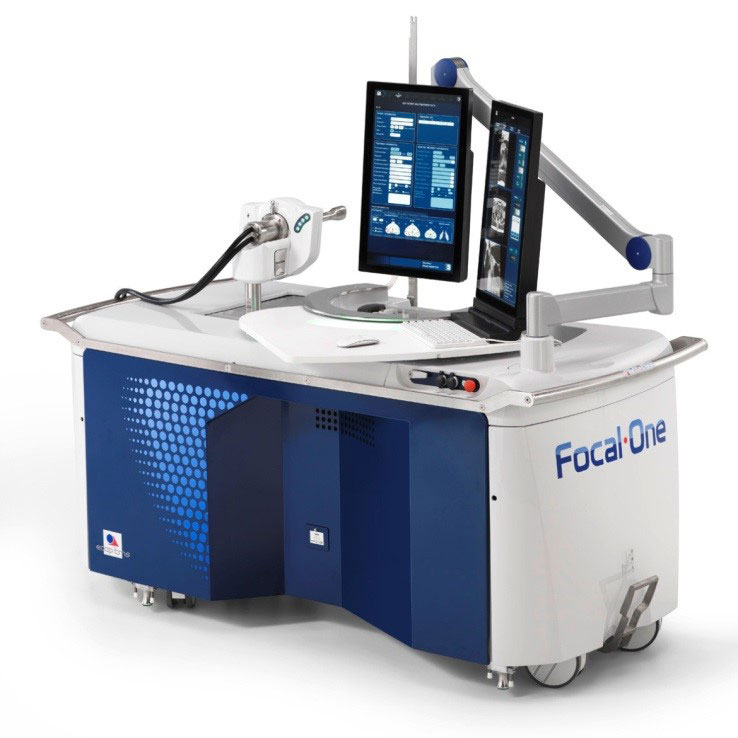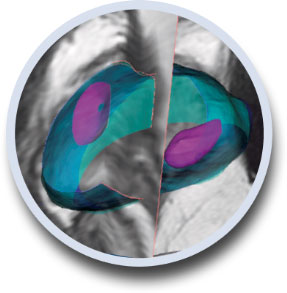Focused ultrasound
HIFU procedure for prostate cancer treatment
One million of prostate cancers are detected each year all over the world, of which 400.000 in Europe and 75.000 in France.
The diagnosis of the disease is mainly performed at a local stage with neither an extension of the cancer beyond the prostatic capsule nor lymph node damage thanks to an early detection.
The death rate is thus reduced and the chances of survival for a localized prostate cancer after 5 years are 88.9% of the cases.
The French Urology Association currently recommends total HIFU treatment for patients of more than 70 years old.
An innovative treatment
Thanks to the MRI and HIFU equipment progress and the development of targeted biopsies, it is now possible to perform a focal treatment as part of two specific study protocols available at the Pasteur Hospital which is one of the 10 French centres selected.
These studies are the two only ones in France that enable our patients to benefit from these very innovative focal treatments of the localized prostatic adenocarcinoma visible through MRI.
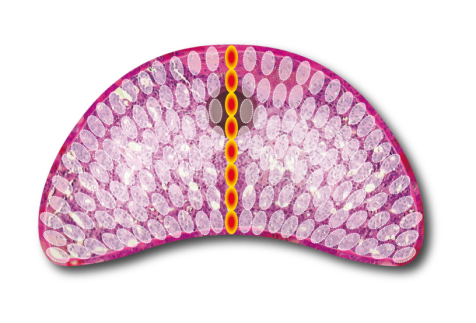
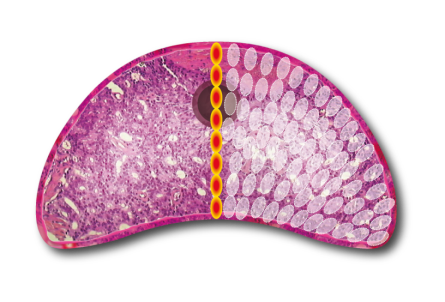
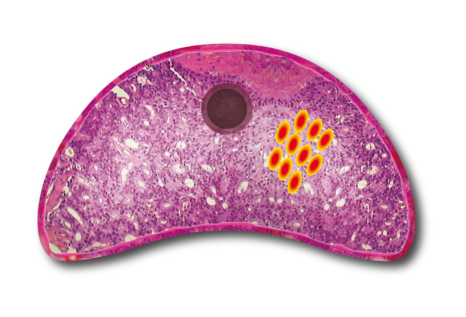
These two future-oriented and multicentric studies are meant for patients whose age is comprised between 50 and 80 with a low or intermediary prostate cancer risk.
The treatment consists in a focal HIFU with an assessment ofoncological and early functional results.
The objective is to give a personal response to each patient while respecting his quality of life and to propose a less invasive treatment with a targeted destruction of the cancer. It leads to a decrease of the morbidity (compared to standard treatments) with urinary incontinence rates of 4 to 15% and erectile dysfunction rates of 30 to 60%.
- Thus we can offer to all our eligible patients an innovative focalized/customized HIFU treatment.
The ultrasound principle
Prostate cancers are classified into three major groups based on their risk of relapse after curative treatment. These risk groups are based on the PSA, DRE (Digital rectal examination), biopsy (Gleason score and amount of cancer tissue in the biopsy specimen) and more and more information collected thanks to the multiparametric MRI (PIRAD score).
Focal treatments are meant for low or intermediary risk localized prostate cancers. They are a recent alternative to radical treatments and active surveillance. Some preliminary results of partial treatments by hemi-ablation are very positive.
The objective of these focalized treatments (“focal”) is the local and stable control of the cancer avoiding avderse effects related to standard radical treatments.
The principle is to destroy the cancer source(s) within the gland and to preserve as much as possible the normal prostatic tissue (maximum at 40%) and sensitive prostatic structures (bladder, rectum, neurovascular bundles).
This technology is based on the use of high-intensity ultrasound. The French equipment called Focal One (Edap TMS) generates focalized ultrasound that are focused on a focal point via a therapy transducer placed in the rectum. The latter is associated with an ultrasound probe which enables a three-dimensional visualization of the prostate.
The ultrasound immediate effect is the destruction of prostatic tissues resulting firstly from coagulation necrosis and secondly from a cavitation phenomenon and a significant thermal accumulation (increase of the temperature between 80 and 100°C).
The Focal One robot that we are using was specifically designed for the focal treatment of the prostate cancer, thanks to a treatment accuracy in the order of a few millimeters.
It gives us the possibility to :
- Visualize the tumour target thanks to an image fusion mechanism between MRI and ultrasound images observed in real time during the intervention.
- Accurately destroy the target based upon adynamic focusing transducer with focal electronic variation.
- Ensure the effective necrosis of the target thanks to a contrast study.
This HIFU treatment does not use ionizing radiation and can thus be repeated several times.
The most common complications of the HIFU procedure are urinary retention (0-17%), urethral stenosis (0-5%) and urinary infection (0-17%) according to some studies.
Today there is a consensus on the focal therapy principles and the current estimate is that 20% of localized prostate cancers could be treated with a focal approach either by treating the whole pathological prostate lobe (hemiblation strategy) or by only targetting the tumor.
For a selection of patients, this treatment should enable to achieve a very low genitourinary complication rate together with an encouraging level of patients with no residual cancer, thus avoiding to have recourse to radical treatments. Nevertheless the results will be known only after 12 to 24 months and will have to be confirmed by solid and randomized statistic studies.
